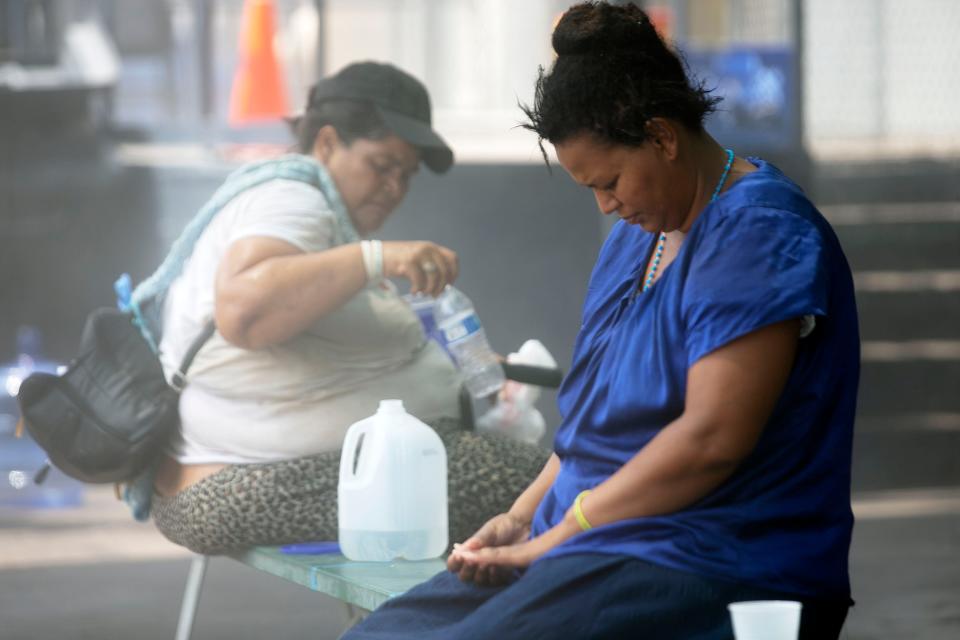As an ER doctor, I've seen how Phoenix heat kills (and what we must do to stop it)
I am an emergency physician who has lived through several unexpected catastrophic crises.
The first was the AIDS pandemic. The second was the COVID-19 pandemic. Last summer, I experienced the third catastrophic crisis of my emergency medicine career, and it was a crisis I’d never imagined.
Patient after patient arrived by ambulance writhing and foaming at the mouth with body temperatures up to 110 degrees.
Textbooks and articles I had read said these body temperatures were lethal. No one was expected to survive. But with rapid cooling in ice water baths and intensive care, many did.
What I did not know was that for every patient that I treated who survived, there were 20 times as many who died at home, in parks, on dirt alleys or in garages.
Nearly many died from heat as car crashes

In all 645 people died in Maricopa County from heat last year, according to the county coroner.
To put that into context, there were 660 motor vehicle deaths in Maricopa County the year before. The number of deaths from heat was more than six times larger than what it was 10 years ago.
Many of those who died used methamphetamines and fentanyl. Their deaths were due to a combination of the extreme environmental heat and the effects of the drugs that can cause the body to overheat and reduce the person’s ability and judgment to seek cooler temperatures.
Sometimes the deaths were complicated by mental illness.
As health care professionals, we learn the best treatments for heat stroke and apply them especially in the coming summer, which is only two months away.
But those treatments are not enough.
Plans to address heat may not be enough
On March 1, Gov. Katie Hobbs published an Extreme Heat Preparedness Plan that included recommendations related to cooling centers, housing, disaster response, data collection and education.
I suspect even these measures may not be enough. Many of those who are most vulnerable have impairments that will affect their ability to seek safety in a heat wave.
Yet, we are not powerless to react.
We need to recognize a heat wave for what it is — a disaster as dangerous as a hurricane or earthquake and requiring a governmental response.
When the same number of people are dying of heat in three months as die of motor vehicle crashes in a year, we need to admit we have a serious health crisis and must do something about it.
There appears to be a threshold outdoor temperature range in which lethal heat events occur at an increasing rate. Last summer, that temperature appeared to be in the range of 117 degrees or higher.
People in the governor’s and mayor’s offices have been designated to coordinate a response. Phoenix has a designated heat czar, David Hondula, and the state has identified a similar leader in Dr. Eugene Livar.
Maricopa County Health Department has a team devoted to the heat crisis. Hospitals and EMS are increasing their training in preparation for the summer.
We should consider these steps, as well
Our challenge is that it remains unclear how all of these resources will be coordinated.
What we can learn from other types of disasters is that there are typically several phases in a disaster response that include mitigation and prevention, preparedness, response and recovery.
As a community we can alert our various populations about impending extreme heat.
How extreme heat is making: Farmwork more dangerous
For extreme heat days, we may want to:
Consider a public warning system.
Have emergency medical services and police actively patrol and pick up anyone needing transport to a shelter or hospital.
Establish an Emergency Control Center that is staffed 24 hours a day with the resources that can be sent where they are needed, including mobile health professionals.
How will we coordinate our response?
Because heat disasters affect our population unevenly and primarily affect vulnerable populations, particularly those without homes, they present a moral dilemma.
The deaths and disabilities associated with heat illness can be largely prevented through appropriate housing and availability of cooling.
Housing is considered an individual responsibility and not a right. Nonetheless, one of the measures of the moral strength of a society is how it addresses the needs of those who are most vulnerable.
Each case of heat stroke could be viewed as a test of the moral strength of our community, and each death a failure of our public and community health system.
Are we up to the challenge?
David Sklar is an emergency room doctor in Phoenix and former editor-in-chief of the journal Academic Medicine. He teaches at Arizona State University. Reach him at david.sklar@asu.edu.
This article originally appeared on Arizona Republic: Phoenix heat is killing more people. ER doctor explains how to stop it

